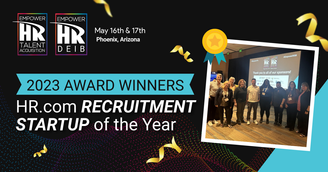Introduction
Recruitment is an intricate dance where the synchrony of skills and opportunities culminate in finding the perfect candidate for a role. However, the path to placements isn’t always straightforward. Sometimes, one recruiter might have the requisition but lacks the bandwidth or expertise, while another holds a valuable candidate but lacks an active requirement. This is where the power of recruiter splits comes into play, fostering collaboration, unlocking new revenue streams, and transforming conversations into opportunities.
The Recruiters’ Dilemma
Recruiters often face a dual challenge: having the right client requisition or job opportunity while also sourcing the right talent to fill it. These requisitions may demand specific expertise, industry knowledge, or technical skills that the assigned recruiter might not possess. On the other side of the equation, a recruiter could have an excellent candidate at their fingertips but struggle to find a suitable job opening that matches their skill set. This divide between requisitions and candidates can be bridged by harnessing the potential of recruiter splits.
The Concept of Recruiter Splits
Recruiter splits involve the collaboration between two or more recruiters to fill a job position. It’s a mutually beneficial arrangement where one recruiter with an active requirement partners with another who possesses the right candidate. The fee earned from the successful placement is then shared between the recruiters involved. This concept not only bridges the gap between client requisitions and candidates but also encourages recruiters to pool their resources, knowledge, and networks for better outcomes.
Breaking Down the Benefits
Collaboration Over Competition: The recruitment industry can be fiercely competitive, but recruiter splits encourage collaboration. Instead of seeing each other as rivals, recruiters view each other as potential partners with complementary strengths. This fosters a more open exchange of ideas and a willingness to share resources for the collective goal of successful placements.
Unlocking New Revenue Streams: Recruiters can tap into previously untapped revenue streams through recruiter splits. By leveraging their networks and expertise in different areas, recruiters can increase their chances of successfully placing candidates in roles they might not have been able to secure on their own. This translates to more placements and a broader revenue base.
Monetizing Every Conversation: The art of recruitment often involves building relationships and having meaningful conversations with candidates. With recruiter splits, these conversations can lead to revenue generation even if the candidate isn’t a fit for the recruiter’s current requirements. The candidate could be a perfect match for another recruiter’s active job requisition, leading to a win-win situation for all parties involved.
Enhanced Insights Through Technology: The modern recruitment landscape benefits from technology like Honeit, which provides a platform for sharing job and talent insights beyond the confines of resumes and job descriptions. This empowers recruiters to collaborate effectively by sharing detailed insights about the role and the candidate’s fit, leading to more informed decisions and successful placements.
The Role of Data in Modern Recruiter Splits
In the past, recruiter splits heavily relied on personal connections and trust, but the landscape has transformed with the integration of data-driven decision-making. Data is now a cornerstone of trust and collaboration in recruiting. It provides an objective basis for evaluating candidates and job requisitions, tracks performance, and offers valuable market insights. This data-driven approach not only enhances transparency but also allows recruiters to make more informed decisions. In today’s world, successful recruiter splits are as much about who you know as it is about what you know, and how effectively you can use data to create meaningful partnerships.
Conclusion
Recruiter splits embody the power of collaboration in the recruitment industry. By joining forces, recruiters can bridge the gap between requisitions and candidates, resulting in successful placements that might not have been possible individually. This approach promotes collaboration over competition, opens up new revenue streams, and capitalizes on every interaction to generate value.
With the aid of cutting-edge technologies like Honeit, the potential for effective collaboration and insightful information sharing is further amplified. The reliance on data as a trust-building mechanism have made partnerships more transparent and outcomes more predictable. This shift toward data-driven collaboration underscores the importance of not only “who you know” but also how well you can leverage data to forge meaningful partnerships. In a world where successful recruitment is all about finding the right synergy, recruiter splits emerge as a dynamic strategy to achieve just that.
LinkedIn Live Session
Watch below as Nick and Andy discuss the power of data-driven communication to build trust, transparency, and authenticity to improve recruiter splits, generate new revenue streams, and make more placements faster.



